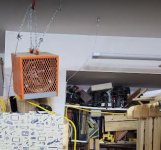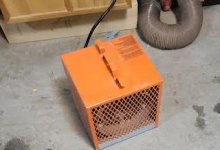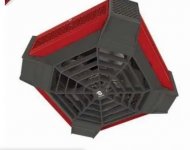My shop (2-car garage) is about 22' x 20', equipped with a 240V / 250 cfm garage heater rated 4800 W (or 16,000 BTU). According to these guidelines, it should be good enough:https://homeguides.sfgate.com/figure-btus-electric-heater-73701.html
I never felt it that way because my heater turned itself off, after running 15 minutes or so, and then restarted after the temperature fell down a bit (after another 15 mins?). So my shop was never warm enough, and I have a couple of radiant heaters to help.
[attachimg=1]
It hit me when I saw a comment about the importance of placing the heater I have at the right height. Of course, the heater shut itself off because hot air rises, and the heater's sensor kept cutting its power off after running for 20 minutes or so!
After placing the heater on the ground, I found the heater going non-stop during the hour I was there!
[attachimg=2]
I must have been misguided by this image that I saw long time ago, thinking that a garage heater should be mounted close to the ceiling, How dumb.
[attachimg=3]
I never felt it that way because my heater turned itself off, after running 15 minutes or so, and then restarted after the temperature fell down a bit (after another 15 mins?). So my shop was never warm enough, and I have a couple of radiant heaters to help.
[attachimg=1]
It hit me when I saw a comment about the importance of placing the heater I have at the right height. Of course, the heater shut itself off because hot air rises, and the heater's sensor kept cutting its power off after running for 20 minutes or so!
After placing the heater on the ground, I found the heater going non-stop during the hour I was there!
[attachimg=2]
I must have been misguided by this image that I saw long time ago, thinking that a garage heater should be mounted close to the ceiling, How dumb.
[attachimg=3]



